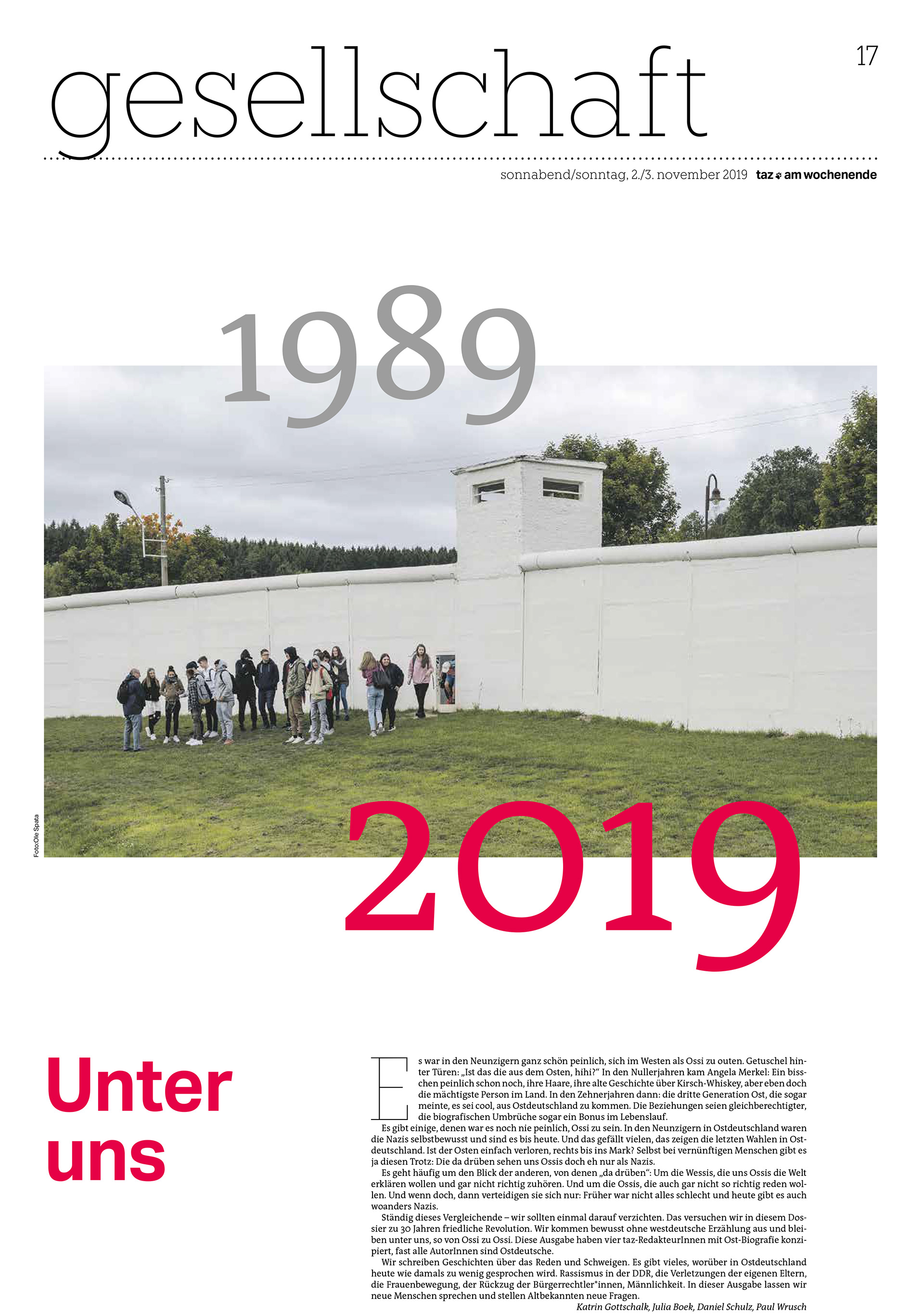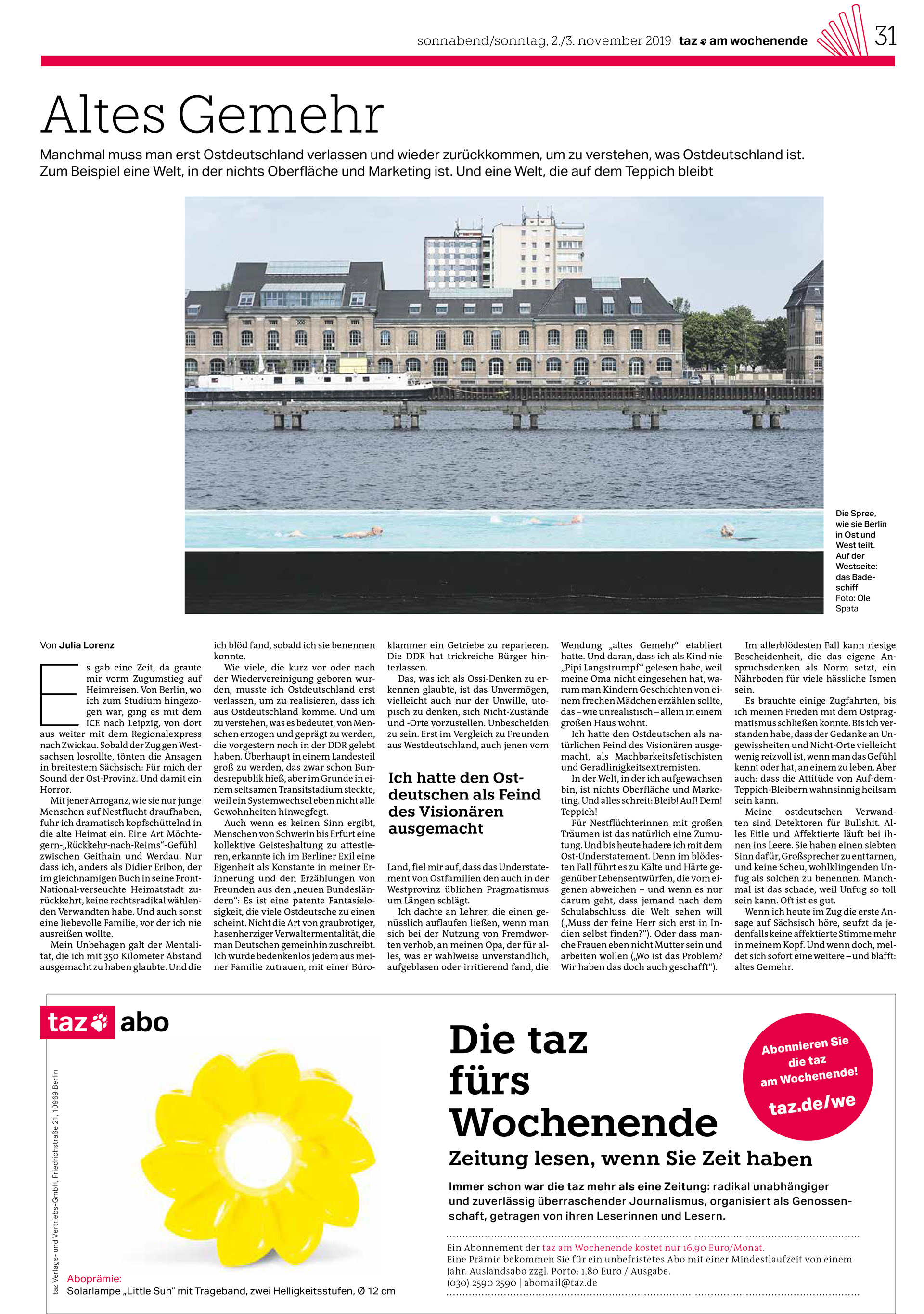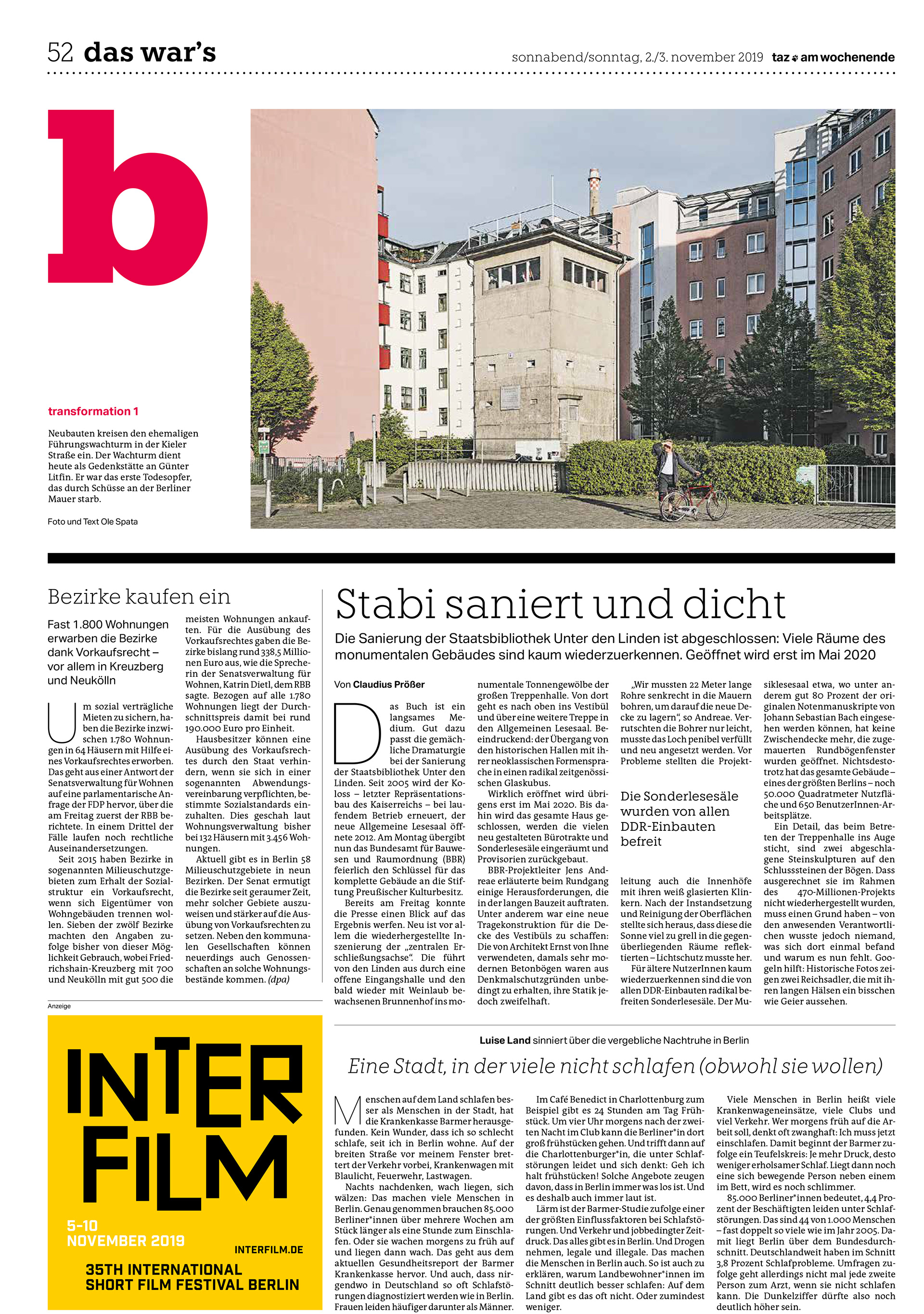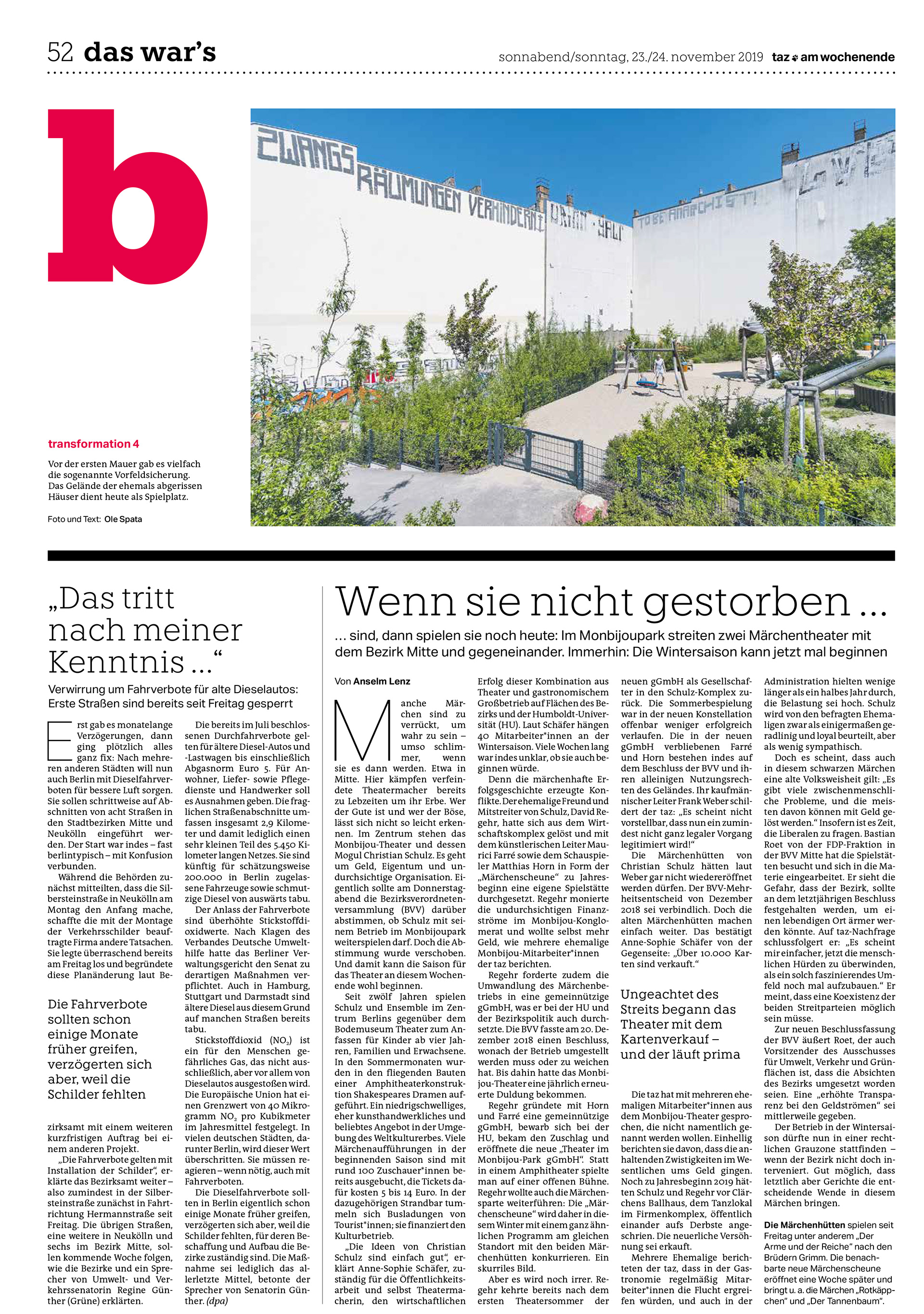Artefakte einer Teilung
A group of visitors stands at the backland wall in Bernauer Straße. On the site of the memorial is the last piece of the Berlin Wall, which has been preserved in its depth.
A garbage man poses on a parking lot in front of a tank at the former GDR border checkpoint at the rest area Marienborn.
A woman with an E-scooter passes the GDR border barrier with border wall, metal fences, signal wires, minefields and watchtower of the border monument Hötensleben. The village was located directly on the border line and was therefore particularly strongly secured. Today, the 350 metres of the barrier are under a preservation order.
The GDR barrier with observation tower and dog walking facility in Geisa, Thuringia is within sight of the US observation base Point Alpha. Here the outposts of NATO and the Warsaw Pact faced each other for 40 years.
Checkpoint Charlie was one of the most important border crossings through the Berlin Wall. In 1961, Russian and American tanks faced each other at Checkpoint Charlie. The checkpoint is a tourist magnet.
Metal bars mark the course of the former border wall in Bernauer Strasse. In 1961, border policeman Conrad Schumann managed to escape here by jumping over the barbed wire.
New buildings encircle the former watchtower in Berlin. Today, the watchtower serves as a memorial to Günter Litfin. It was the first victim to die as a result of gunfire at the Berlin Wall.
Tourists at the East Side Gallery in front of the painting of the "brother kiss" between Leonid Brezhnev and Erich Honecker by the Russian painter Dmitri Vrubel. For renovation work, the Berlin Wall was secured with a building fence.
A school class visits the border signal fence and the observation towers of the Mödlareuth Memorial. The divided village was a restricted area on one side and a crowd of visitors on the other. Here it was forbidden to wave or greet from east to west.
Hundreds of visitors relax in the Mauerpark, the former death strip.
The Beach Mitte volleyball court is bordered by the backland wall.
The backland wall and the border lighting are still used today at a campsite in Kleinmachnow as a fence and power supply.
The accessible barriers in the Spree secured the water border between Friedrichshain and Kreuzberg. In 1962 a group of young East Berliners escaped to the West with a passenger ship. Today the Badeschiff Berlin can be found here.
The watchtower in the outdoor border museum Sorge im Harz is prepared for renovation work. In addition to the watchtower, remains of the border fences, a border column, a water barrier and an earth bunker have been preserved in Sorge. The border museum is part of the "Green Belt". The Green Belt is a Europe-wide nature conservation project to preserve the diversity of species and habitats along the former inner-German border. The border strip has become a refuge for more than 1,200 rare and endangered plant and animal species.
Two women look through a hole in the border wall. In Bernauer Strasse 1.4 km of the former border strip are still preserved.
A woman walks through the Invalidenfriedhof in Mitte. The cemetery is still divided by the backland wall.
The former checkpoint for transit traffic on the 115 motorway in Kleinmachnow.
The former GDR border tower on the Elbe dyke was converted into a lookout tower over the four-country corner. The observation tower is part of the 190 km long four-country border cycle path that follows the course of the Green Belt.
The watchtower in Schlesischer Busch is one of the last remaining watchtowers in Berlin. The meadow of the death strip is a popular barbecue place today.
A mini convertible is parked at the Eastside Galery in front of the mural "Test the Rest" by Birgit Kinder.
A residential house with front garden in the west of the 40 inhabitants village Mödlareuth. In the background the GDR border wall. The Americans called it "Little Berlin", this village at the end of the world, which, like its big brother, became a symbol of German division.
In the former death strip, fruit-grower Udo Herbert collects apples from the roadside. Herbert grew up in the GDR border town of Berkach.
Memorial place "Dorfrepublik Rüterberg". The site borders on two sides on the federal state of Lower Saxony. At the time of the division of Germany, it was surrounded by barriers for 22 years due to the regulations of the GDR border security. It was separated from the Federal Republic of Germany by a fence system along the Elbe.
The engineers from the Schifflersgrund border museum drive along the patrol path of the former barrier with border fence, control strip and watchtower in Asbach-Sickenberg.
The ornithologists Horst Wegener and Achim Bruch observe a Red-footed falcon in the former death strip.
Günther and Angelika on the outside of the Grenzland-Museum Schnackenburg.
The former barricade with observation tower, closed railway line and tank barricades are next to the new railway line in Gerstungen preserved.
The ice cream shop "Eispirat" in Dömitz advertises with original GDR soft ice cream. In GDR times, Dömitz was subject to strong restrictions, which it was located directly in the restricted area of the inner-German border.
An election poster of the right-wing populist AfD hangs on the east side of the village of Mödlareuth. For more than 37 years the border divided the small village "Little Berlin" and tore up friends and families.
The US observation base Point Alpha in Rasdorf is within range of the former GDR border. For 40 years, the outposts of NATO and the Warsaw Pact faced each other directly here.





